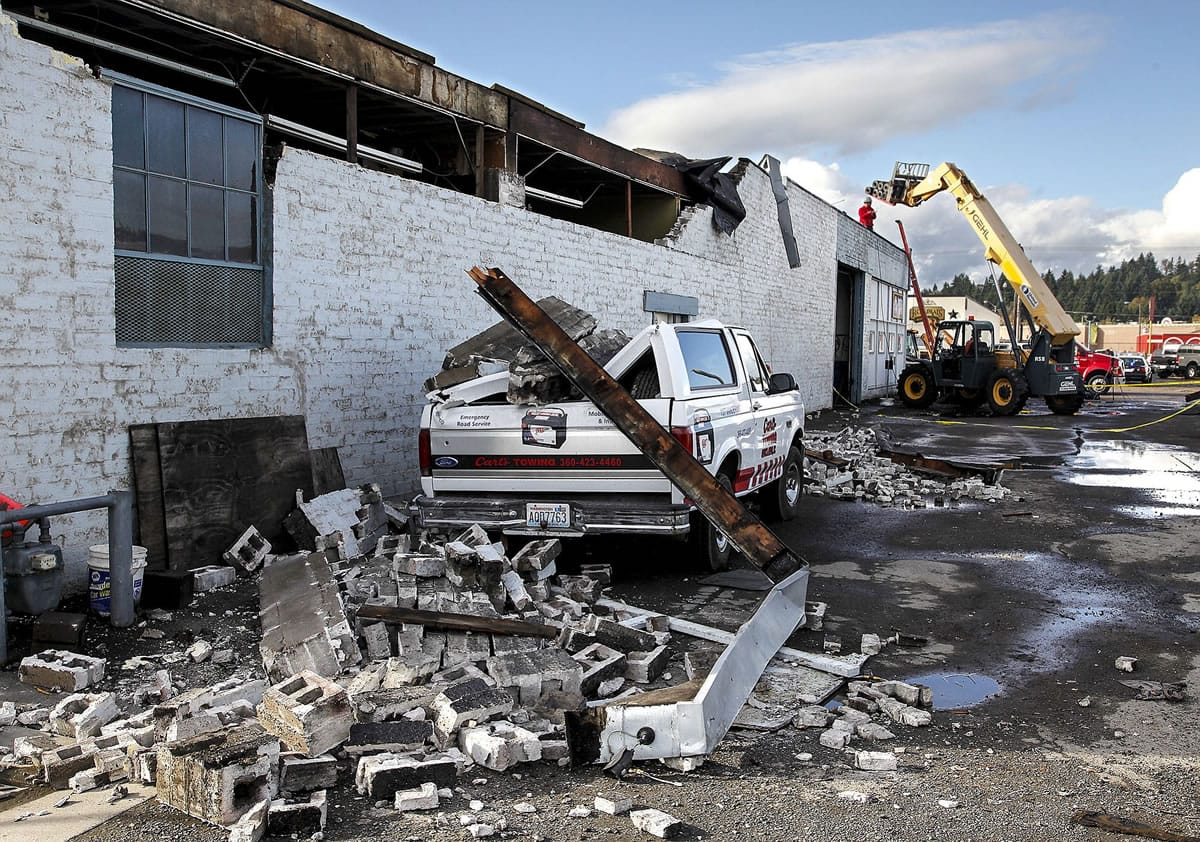LONGVIEW — A rare tornado ripped down power lines and damaged property Thursday in Longview, but there were no immediate reports of injuries, officials said.
The tornado began near a Safeway store and traveled six blocks down Vandercook Way, according to the National Weather Service. The tornado reportedly touched down at 12:40 p.m., and the weather service sent a survey team to assess the aftermath.
The National Weather Service initially said a “strong wind event” hit the southwest Washington city Thursday afternoon, and video taken by a citizen appears to show a roof being blown off a building. People have shared photos and videos of the storm on social media and elsewhere.
Police want residents to avoid Vandercook Way from Seventh Avenue to 12th Avenue due to downed power lines and damage.
The Rev. Eric Atcheson said he saw the funnel cloud form and touch down near his church. He barely made it inside before the wind tore through an alley between two church buildings.
“There is a pre-school in the building, so I was able to make sure all our kids and teachers are safe,” he said.
The church didn’t sustain any damage but several trees were knocked down, he said.
Tornadoes are rare in Washington and the Pacific Northwest, where the Pacific Ocean generally prevents severe temperature changes.
Jennifer Rossetti saw debris flying past her window and says wind blew the door from a nearby office supply store. Video taken by another person appeared to shows roof tiles being blown from a building.
Jalen West, a 17-year-old Kelso High School student, said a resource officer ran into the gym during his physical education class and told everyone to head to the locker room for safety.
“There are downed trees, but the school is OK,” he said.
A damage estimate was not immediately available.
Longview is located about 50 miles north of Portland.
Local Angle
Thursday’s tornado in Longview wasn’t the first time Southwest Washington has seen a weather event more commonly associated with the Midwest and South.
Tornadoes are rare in the Northwest, but not unheard of. A few have touched down in Clark County over the years.
In March 2013, a small tornado tore through a barn in Hockinson as severe weather swept through the county. The storm was classified as an EF0 on the enhanced Fujita scale, with winds estimated at 60 to 85 mph. No other damage was reported.
In January 2008, a stronger tornado formed near Vancouver Lake, then skipped across Hazel Dell and Hockinson while causing an estimated $500,000 in damage. The EF1 storm damaged dozens of homes, shredded trees and downed power lines with wind speeds between 90 and 110 mph. No one was injured.
The most devastating tornado ever recorded in Washington or Oregon struck Vancouver in April 1972. That storm killed six people, caused millions of dollars in damage and remains unmatched for its toll on life and property. The 1972 tornado generated wind speeds as high as 200 mph and stayed on the ground for nearly eight miles, carving a path of destruction along the way.
On Thursday, the tornado in Longview was initially reported as a “funnel cloud.” The National Weather Service later confirmed it was indeed a tornado.
And there is a difference: A funnel cloud is a rotating column of air that doesn’t make contact with the ground. Once it touches the ground or develops a visible debris cloud beneath it, the event becomes a tornado, according to the National Weather Service.
— Eric Florip




